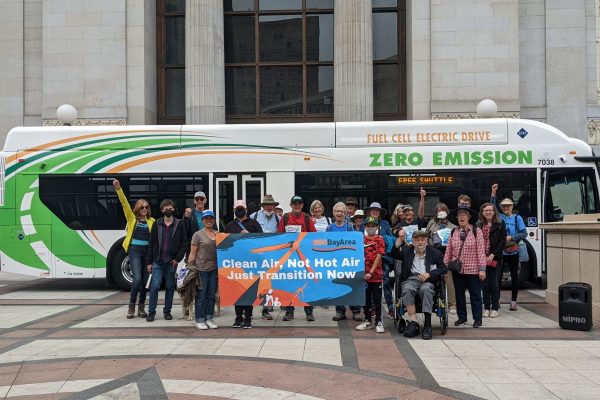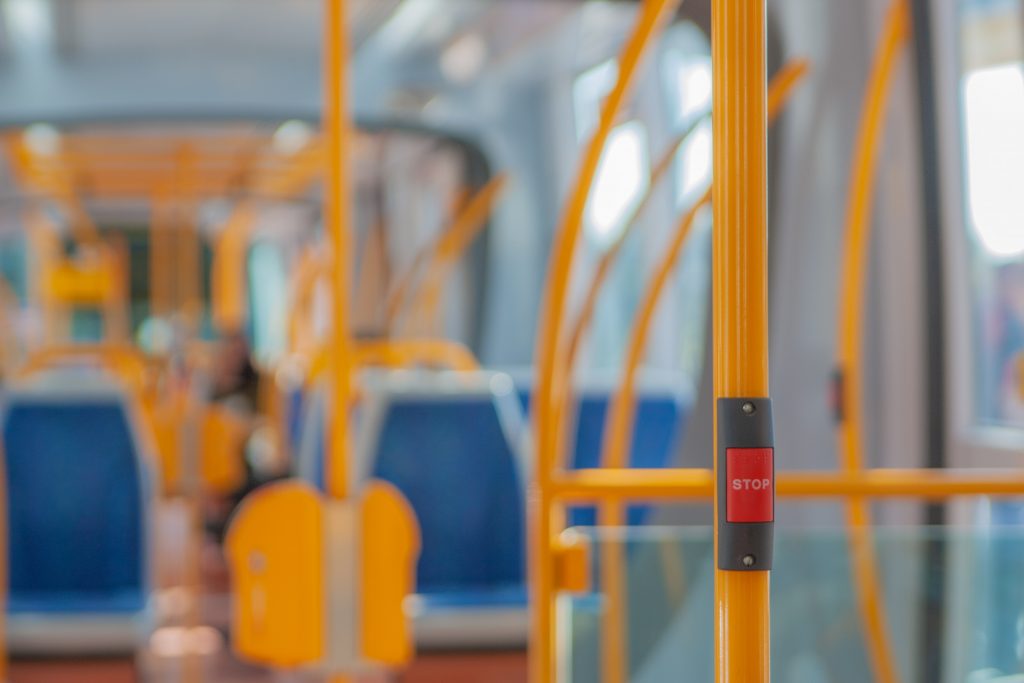
Should Transit Be Free?
Free transit sounds like a utopian fever dream. Imagine being able to hopscotch your city on a bus, never again needing to fumble for your ticket, seeing the dreaded “insufficient

We are speeding the shift to carbon-free, affordable, safe and accessible mobility for everyone.
Transportation is the Bay Area’s biggest single source of greenhouse gas emissions.
350 Bay Area aims to eliminate greenhouse gasses from transportation in California, and the SF Bay Area in particular. To do this we need to reduce car use by supporting transit, bikes, walking, and transit oriented land use, and we need to convert all remaining vehicles to electric–cars, trucks, buses, trains and ships too! (We’re not sure how to deal with airplanes yet, but take the train if you can!)
The State’s target date of 2035 to stop the sale of gas cars, while admirable, is too late to achieve the State’s goals of 40% GHG reduction by 2030 and carbon neutrality by 2045. We need to end the sale of internal combustion engine vehicles ASAP, and no later than 2030.
Agencies such as MTC and CalTrans have not taken significant steps to help meet this State law and the State goal, but in 2021 and 2022 the Governor has allocated state budget surplus money for EVs (trucks, buses, and cars) – funding we’ve been waiting for since California passed SB 32 in 2016. This is a huge opportunity! We need to make sure this gets implemented effectively.
The Governor’s Executive Order (September, 2021) to phase out the sale of gas cars by 2035 was a win. the Governor’s Executive Order (September, 2021) to phase out the sale of gas cars by 2035 was a win. The California Assembly had failed to pass even a bill to set the date at 2040, which 350 Bay Area had been advocating for (even though we knew it was too late, at least it was something). Now we are campaigning to move the 2035 date up since it is also too late; we need policy that matches the science but every new target is still a positive step forward.

Free transit sounds like a utopian fever dream. Imagine being able to hopscotch your city on a bus, never again needing to fumble for your ticket, seeing the dreaded “insufficient

Since 2014, about 30 cities in the United States have adopted the goal of eliminating all traffic fatalities and severe injuries by 2025, known collectively as the Vision Zero pledge.

For Nichole Keyes, a 28-year-old single mother of three young children, landing a job as a warehouse picker in Scranton, Pennsylvania, proved difficult enough. But that was only half the
Thank you for donating to 350 Bay Area
To donate by check, please make your check out to 350 Bay Area, and mail it to the address below. Be sure to include your name and address so that we can send a donation receipt.
350 Bay Area
1611 Parker Drive
Santa Rosa, CA 95405
350 Bay Area is a 501(c)(3) non-profit and as such all donations are tax-deductible.